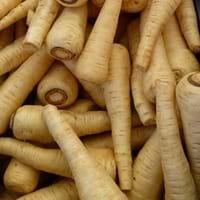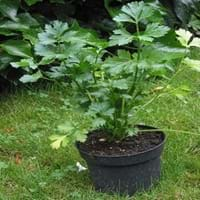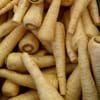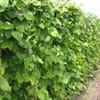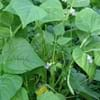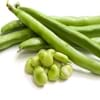Life Span
Biennial and Perennial
Annual or Biennial
Origin
Europe, Western Asia
Europe, Northern Africa, Asia
Habitat
waste ground, wastelands
Coastal Regions, Marshy ground, Wet ground
USDA Hardiness Zone
4-9
-9999
Sunset Zone
A1, A2, A3, H1, H2, 1a, 1b, 2a, 2b, 3a, 3b, 4, 5, 6, 7, 8, 9, 10, 11, 12, 13, 14, 15, 16, 17, 18, 19, 20, 21, 22, 23, 24
-
Habit
Rosette/Stemless
Upright/Erect
Flower Color
Yellow
White
Flower Color Modifier
Bicolor
Bicolor
Fruit Color
Brown, Black
Tan, Brown
Leaf Color in Spring
Green
Light Green
Leaf Color in Summer
Green
Green, Light Green
Leaf Color in Fall
Green
Green, Light Green
Leaf Shape
Pinnate
Irregular
Plant Season
Summer
Spring, Summer
Sunlight
Full Sun
Full Sun
The pH of Soil
Neutral
Neutral, Alkaline
Soil Drainage
Well drained
Well drained
Bloom Time
Summer
Late Spring
Tolerances
Drought
Drought
Where to Plant?
Ground, Pot
Container, Ground
How to Plant?
Seedlings
Seedlings, Transplanting
Plant Maintenance
Medium
Low
Watering Requirements
Average Water Needs, Do Not over Water, Keep the ground moist but not water-logged
Keep ground moist, Requires regular watering
In Summer
Lots of watering
Lots of watering
In Spring
Moderate
Moderate
In Winter
Average Water
Average Water
Soil pH
Neutral
Neutral, Alkaline
Soil Drainage Capacity
Well drained
Well drained
Sun Exposure
Full Sun
Full Sun
Pruning
Remove damaged leaves, Remove dead branches, Remove dead leaves
Remove damaged leaves, Remove shoots
Fertilizers
All-Purpose Liquid Fertilizer
Less fertilizing
Pests and Diseases
Aphids, Armyworm, Cutworms, Downy mildew, Pitch canker, Red blotch
Bacteria, Downy mildew, Fungal Diseases, fungus, Mosaic viruses, Pink Root, Red blotch
Plant Tolerance
Drought
Frost
Flower Petal Number
-
Single
Fragrant Bark/Stem
Yes
Yes
Foliage Texture
Fine
Coarse
Foliage Sheen
Matte
Glossy
Attracts
Butterflies
Insects, Mice, Rodents, Spider Mites
Allergy
Stomach burn
Irritation to stomach
Beauty Benefits
Blood purifying, Good for skin
Good for skin, Improve skin condition, Moisturizing, Skin Problems
Environmental Uses
Air purification
Air purification, Food for animals, Food for birds, Food for insects
Medicinal Uses
Aphrodisiac
Cancer, Combats Stress, Eye Problems, High blood pressure, High cholestrol, Indigestion, Inflammation, Weight loss
Part of Plant Used
Root
Leaves, Seeds
Other Uses
Food for animals, Used as a nutritious food item
Employed in herbal medicine, Oil is used in perfume, soaps, creams, etc., Used As Food, Used for its medicinal properties, Used as a spice
Used As Indoor Plant
Yes
Yes
Used As Outdoor Plant
Yes
Yes
Garden Design
Edible, Herb, Vegetable
Container, Edible, Herb / Vegetable
Botanical Name
PASTINACA sativa
APIUM graveolens
Common Name
Parsnip
Celery
In German
Pastinake
Sellerie
In Greek
Είδος δαυκίου
Σέλινο
In Portuguese
cherivia
Aipo
In Polish
Pasternak
Seler
Phylum
Magnoliophyta
Tracheophyta
Class
Magnoliopsida
Magnoliopsida
Clade
Angiosperms, Asterids, Eudicots
Angiosperms, Asterids, Eudicots
Season and Care of Parsnip and Celery
Season and care of Parsnip and Celery is important to know. While considering everything about Parsnip and Celery Care, growing season is an essential factor. Parsnip season is Summer and Celery season is Summer. The type of soil for Parsnip is Loam and for Celery is Loam while the PH of soil for Parsnip is Neutral and for Celery is Neutral, Alkaline.
Parsnip and Celery Physical Information
Parsnip and Celery physical information is very important for comparison. Parsnip height is 15.20 cm and width 7.60 cm whereas Celery height is 45.70 cm and width 30.50 cm. The color specification of Parsnip and Celery are as follows:
Parsnip flower color: Yellow
Parsnip leaf color: Green
Celery flower color: White
- Celery leaf color: Light Green
Care of Parsnip and Celery
Care of Parsnip and Celery include pruning, fertilizers, watering etc. Parsnip pruning is done Remove damaged leaves, Remove dead branches and Remove dead leaves and Celery pruning is done Remove damaged leaves and Remove shoots. In summer Parsnip needs Lots of watering and in winter, it needs Average Water. Whereas, in summer Celery needs Lots of watering and in winter, it needs Average Water.
